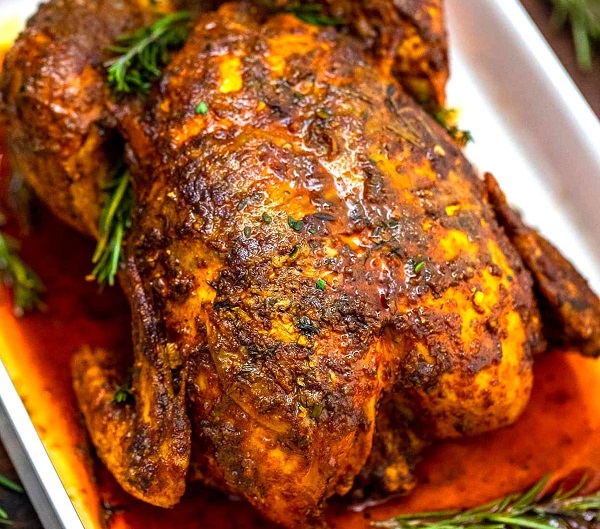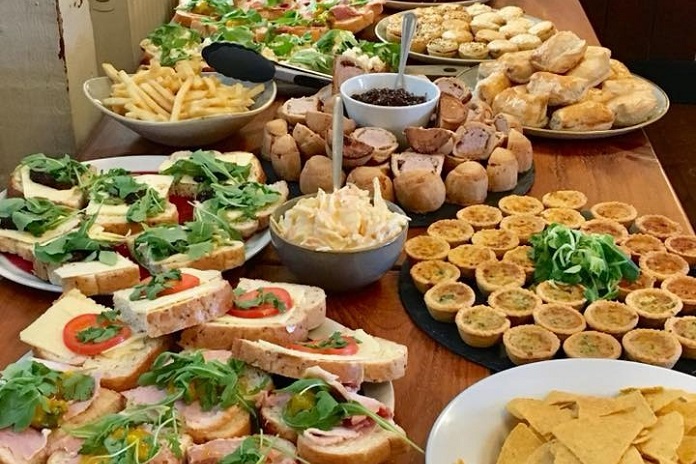On January 2 we celebrate National Buffet Day a day to celebrate, a wide variety of foods overall taste experience of food or drink, combines basic taste (sweet, sour, salty, bitter, umami) with its aroma, texture, and sometimes even its temperature.
History of National Buffet Day
Did you know that the buffet table derives from the Brannvinsbord, that is a type of Swedish beverage table from the 16th Century? However, this was a buffet system where women and men ate in different rooms but still had an array of food to choose from and in the 18th century, the modern buffet began appearing as a smorgasbord. However, the smorgasbord was initially a table where pre-dinner drinks and nibbles were served to a group of guests separately from the main dinner, but over time people started to use it to serve the main meal too.
Besides this, the word ‘buffet’’ originates from a type of French sideboard that used to serve food. It was used in the 17th century by French men who would unexpectedly arrive at the home of women they wanted to woo, and it was simply a piece of furniture. However, it became popular in the second half of the 20th century long after the smorgasbord.
Did you know that the word buffet was much easier to pronounce in the English-speaking world and was considerably easier to remember?
It was not until the year 1939 that Swedish entrants at the New York World’s Fair exhibition debuted and displayed a smorgasbord while displaying the best of Swedish food to lots of visitors attending that year.
After that, the smorgasbord was popular in New York and the word ‘‘buffet’’ was being used to describe it.
Later on in the 1940s the American buffet began in Las Vegas where the Buckaroo Buffet was created by Herb McDonald with people choosing what they would eat from a range of food, a ploy used to keep people inside casinos for longer. After that, the buffet expanded all over the country and in the year 1980s TV commercials for buffets were commonplace.
| 2016 (Critical Eating) | It is claimed that buffets have fallen due to the ‘‘newfound focus on fast and casual dining.’’ |
| 2014 (Chuck-a-couple) | A couple in Utah following the Atkins diet are kicked out of Chuck-a-Rama after serving themselves carved roast beef 12 times. |
| 1960’s (What we eat in Vegas, stays) | Almost every casino in Las Vegas has its own buffet. |
| 1946 (For a price) | The first all-you-can-eat buffet restaurant debuts in the Vegas Hotel. |

Recipe for Garlic Herb Roasted Chicken
Ingredients:
- 1 whole chicken (about 4-5 pounds)
- 4 cloves garlic, minced
- 2 tablespoons olive oil
- 1 tablespoon fresh rosemary, chopped (or 1 teaspoon dried)
- 1 tablespoon fresh thyme, chopped (or 1 teaspoon dried)
- 1 tablespoon fresh parsley, chopped (or 1 teaspoon dried)
- 1 lemon, halved
- Salt and freshly ground black pepper, to taste
- 1 cup chicken broth or water (for roasting)
Instructions:
- Preheat your oven to 425°F (220°C).
- Remove the chicken from its packaging and pat it dry with paper towels. This helps ensure a crispy skin.
- In a small bowl, mix the minced garlic, olive oil, rosemary, thyme, and parsley. Season with salt and pepper to taste.
- Rub the garlic herb mixture all over the chicken, making sure to get it under the skin and inside the cavity for maximum flavour.
- Place the lemon halves inside the chicken cavity. This will add moisture and a fresh citrus flavour as it cooks.
- Place the chicken in a roasting pan or on a rack set over a baking sheet. Pour the chicken broth or water into the bottom of the pan to keep the chicken moist and help with the roasting.
- Roast the chicken in the preheated oven for about 1.5 hours, or until the internal temperature reaches 165°F (74°C) when measured at the thickest part of the thigh. Baste occasionally with the pan juices for extra flavour.
- Once done, remove the chicken from the oven and let it rest for 15-20 minutes before carving. This allows the juices to redistribute throughout the meat.
- Carve the chicken and serve it with your favourite sides. The crispy skin and flavorful meat should make for a satisfying meal!
